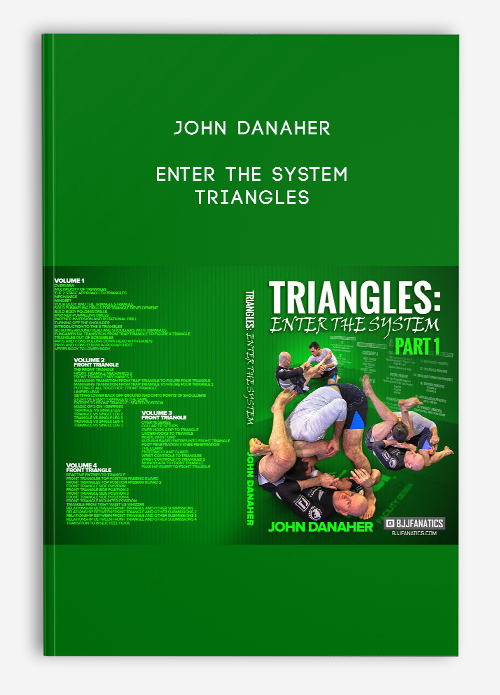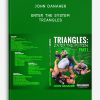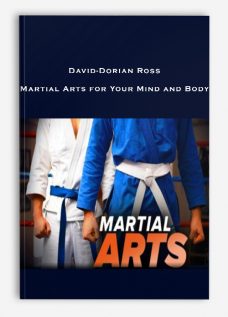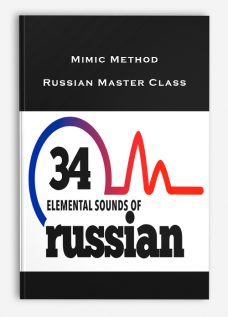Enter The System – Triangles by John Danaher
Original price was: $197.00.$39.00Current price is: $39.00.
Product Include:
File size:
- Description
Description
Enter The System – Triangles by John Danaher
**More information:
Get Enter The System – Triangles by John Danaher at bestoftrader.com

Description
The Most Comprehensive Course On Triangles Ever Created – By The Greatest Grappling Coach On Earth
John Danaher Calls The Triangle The Most Versatile Submission There Is
In Triangles: Enter The System He Shows All Of the Setups, Chokes, And Armlocks That Will Make This Become Your Go To Move From Bottom Or Top
John draws back the curtain and lets you in on all of his secrets
John Danaher has become the best known and most sought-after grappling coach on Earth
Transform your entire game
The Most Comprehensive Course On Triangles Ever Created – By The Greatest Grappling Coach On Earth
John Danaher Calls The Triangle The Most Versatile Submission There Is & In Triangles: Enter The System He Shows All Of the Setups, Chokes, And Armlocks That Will Make This Become Your Go To Move From Bottom Or Top
Entries Into Rear Triangle Back Position by John Danaher
John Danaher has become the best known and most sought-after grappling coach on Earth and, while he is (by all accounts) a very honorable man, he doesn’t believe in fighting fair. Ever.
Of course John coaches his athletes to behave admirably and always compete within the rules, but he never wants to fight 2 hands with 2 hands –
he wants to only expend energy when he has the advantage.
No move better exemplifies this principle better than the triangle choke, in all its forms. It puts the strongest muscles in the body, the glutes, hamstrings and thighs, against perhaps the weakest part of an opponent’s body: the neck muscles.
This huge advantage is the basis around one of the Danaher Death Squad’s most challenging and useful strategies, the triangle system.
The triangle choke can be a game-changing technique, when you unlock its full potential. Just read what John himself had to say about it recently, in his own words:
“The remarkable properties of the triangle: The triangle is among the most impressive moves in all of Jiu Jitsu. It has many manifestations and variations. One of the best and most unique features is that it is capable of being used as both a strangle and a joint lock at the same time. Usually we are given a choice when we go for a submission – it’s either a strangle or a joint lock – sankaku lets us have our cake and eat it too! Not only does it give us a choice – WE CAN USE THE THREAT OF ONE TO SET UP THE OTHER. For example in a front triangle, the general rule is that the closer my opponents head to my head, the easier the strangle. The further his head moves away – the easier the armlock. Triangles allow us to use several different types of joint locks without releasing the stranglehold, creating real danger for the opponent. Learn to use this unusual dual submission threat of the various triangle variations to get your submission percentages rising!”
In the first BJJ Fanatics Podcast John talked about how counter intuitive the triangle is, it just doesn’t work how most people assume it does..
While grappling has been around since the times of Hammurabi, we have clear drawings of all of the techniques – and a lot of them resemble the ones we see today. Single legs and double leg takedowns, fireman’s carries and snapdowns, even chokes and joint locks.
As far back as we can tell, these moves have been practiced and trained and perfected. The biggest thing missing? We have never seen drawings of the Triangle before the early 20th Century – after Maeda had come to Brazil and started spreading Jiu Jitsu. Right as this revolution in ground techniques was happening, people were finally discovering the way to effectively choke with the legs.
Because it is so counter intuitive, the move needs to be taught step by step. The natural habit for fighting is to use your upper body to fight their upper body, and your lower body to fight their lower body. Changing that up means having to do things the right way, in the right order, or you risk losing a great chance to achieve the submission.
There is no one better than John for that task. As the world’s premier grappling coach, he has unlocked the most successful methods of applying the triangle and getting the submission, and his athletes success in competition is the proof.
John has found every key detail over many, many hours of intense study and has incorporated them into a bulletproof series of moves. With rigorous attention to body mechanics and constantly creating advantages, each move is a link in a chain that can skyrocket your triangle success percentage.
Side Triangle While Guard Passing by John Danaher
Odds are when you ask any grappler to show a triangle choke, they will all show some variation of the same one, a front triangle where you strangle the opponent.
The Danaher triangle system moves well beyond that, by incorporating a series of several different triangle locks that (when combined) form the system you can use to finish the fight. Once you understand not only how to lock on the triangle but also how to use them together in sequence, you will have an answer for every problem you face.
So many people see a triangle choke as a move exclusively for the tall and lanky guys in the gym, but that is, in many ways an outdated way of thinking about jiu-jitsu. It’s not about moves, it’s about movements, and the body mechanics to enter into the system are very low. Once you are there, you can start going through your progressions and getting great results! Leg length doesn’t have to hold you back anymore, your choke can finally be as strong as your technique!
This series has been something the public has wanted to see ever since Gordon Ryan’s super fight with Ralek Gracie. Leading up to the fight, John’s student was pledging to win the match with a triangle choke. Telling your opponent your game plan is usually a foolish thing to do, especially when they are a member of the Gracie family, but the system was just too strong. Gordon won with the triangle, exactly as predicted, and even in the time frame he had predicted. The system was so strong that he had the entire match mapped out before they ever shook hands and started grappling.
Take advantage of one of the cornerstones of the Danaher system today with this full set of systematic senkaku strangles. Learn a variety of triangles, and combinations of attacks, that you can use to start locking people up and tapping them from top or bottom, gi or no gi.
This series is like a college course in triangle chokes. Start by getting John’s unique perspective on why he favors the triangle so heavily, as opposed to some other moves.
As one of the most analytical and insightful coaches in the world, he is able to explain the key battles and benefits of the position better than anyone. Once you have understood the attack, you must first be able to move your body in the right ways to achieve it.
John leads you through the same exercises and drills (both solo and partner) that he uses with his students every day as they learn and prepare.
The triangle choke, from any position, is a series of little battles that you must win in the right order to hit the move properly. It can be a little daunting, even for experienced grapplers, but there is a better way.
Coach Danaher gives a whole new perspective on how to really attack the triangle without the struggle and drama of fighting against the normal resistances. Instead, use your body mechanics to really optimize your angles and give yourself the advantage from the start.
The triangle choke is so versatile that once it is on, the whole game changes. You don’t have to worry about top or bottom, and there are a number of other submission options from anywhere in the system. By always having another joint lock or choke to progress to, you multiply the danger your partner is in.
Basic Front Triangle Application From A Seated Guard
#1
Here John is playing a seated guard and exercising wrist control in order to enter his triangle choke. Notice he has 2 hands on 1 and he has one foot controlling the distance of his opponents lower body and one foot controlling the distance of his opponents upper body.
#2
John has achieved the one in and one out position that he was in search of. Notice the way he is utilizing his 2 on 1 grip. His opponents palm is facing himself so Danaher can control the direction of the hand. John’s other hand is on the elbow to make sure his opponent cannot pull his arm out.
#3
John has made a very minor adjustment in this image. If you notice in the last picture his legs are not being engaged, where as, in this picture, John is implementing posture control by utilization of his legs. You can see by the direction of his toes and position of his heel that he is keeping his legs very heavy to control his opponents posture.
#4
John has begun to adjust his sankaku. He has let go of the wrist with his right hand and reached to under hook the leg in order to create a drastic angle to enhance his choking pressure. His left knee is placed strategically behind his opponents head to control the posture, his hip is off the ground, and his right leg is preparing to lock the triangle.
#5
John has now locked in his sankaku. Notice that he still has his hips elevated off of the ground and he is controlling the wrist of his opponent with the left hand and under hooking his opponents leg with his right hand. This is so that he can maintain his angle. His legs are acting as a vice grip at this point and his opponent is nearly unconscious.
#6
In a last ditch effort to escape, John’s opponent has attempted to stand up. John had preemptively anticipated that his opponent would attempt to stand when under hooking his leg. This under hook allows John to maintain the angle. Now John will just lift his hips and pinch his knees to apply the finish.
More information about Lifestyle:
Lifestyle is the interests, opinions, behaviours, and behavioural orientations of an individual, group, or culture.
The term was introduced by Austrian psychologist Alfred Adler with the meaning of “a person’s basic character as established early in childhood”.
For example, in his 1929 book “The Case of Miss R.”. The broader sense of lifestyle as a “way or style of living” has been documented since 1961.
Lifestyle is a combination of determining intangible or tangible factors.
Tangible factors relate specifically to demographic variables, i.e. an individual’s demographic profile,
whereas intangible factors concern the psychological aspects of an individual such as personal values, preferences, and outlooks.
A rural environment has different lifestyles compared to an urban metropolis.
Location is important even within an urban scope.
The nature of the neighborhood in which a person resides affects the set of lifestyles available
to that person due to differences between various neighborhoods’ degrees of affluence and proximity to natural and cultural environments.
For example, in areas near the sea, a surf culture or lifestyle can often be present.
Self Help – Self Help online course
More information about Self Help:
Self-help or self-improvement is a self-guided improvement—economically, intellectually, or emotionally—often with a substantial psychological basis.
Many different self-help group programs exist, each with its own focus, techniques, associated beliefs, proponents and in some cases, leaders.
Concepts and terms originating in self-help culture and Twelve-Step culture, such as recovery, dysfunctional families, and codependency have become firmly integrated in mainstream language.
Self-help often utilizes publicly available information or support groups, on the Internet as well as in person, where people in similar situations join together.
From early examples in self-driven legal practice and home-spun advice, the connotations of the word have spread and often apply particularly to education, business,
psychology and psychotherapy, commonly distributed through the popular genre of self-help books.
According to the APA Dictionary of Psychology, potential benefits of self-help groups that professionals may not be able to provide include friendship,
emotional support, experiential knowledge, identity, meaningful roles, and a sense of belonging.















